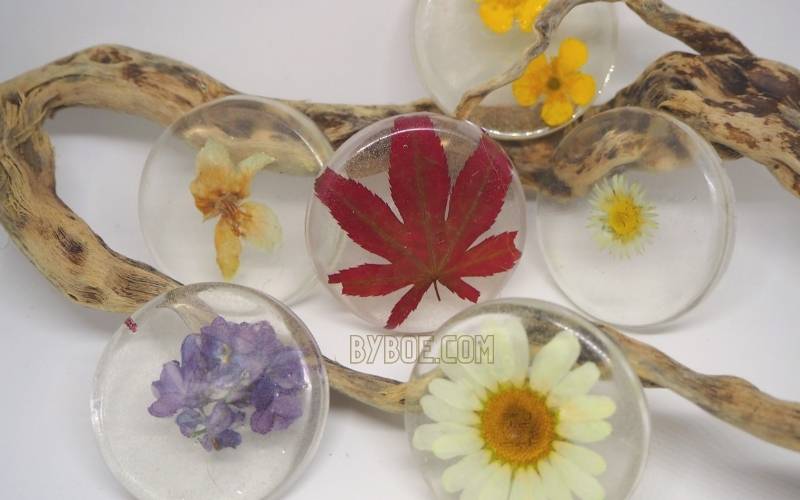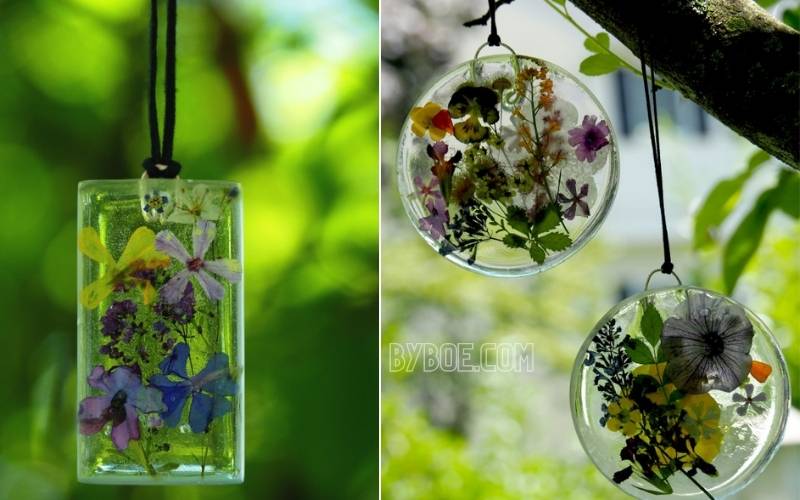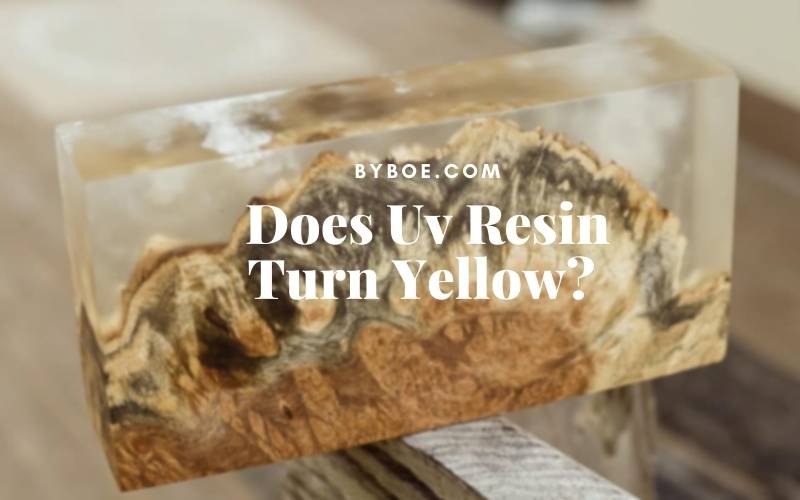UV resin is a type of resin that cures when exposed to ultraviolet light. The resin can be clear or colored, and it is often used to make jewelry, figurines, and other objects. Some people have reported that UV resin can turn yellow over time, but the cause of this discoloration is not yet known. In this article, Byboe will show you Does Uv Resin Turn Yellow? and Why?
Table of Contents
The Possible Causes Of Epoxy Turning Yellow

UV Light Exposure
The most common cause for yellowing is UV light exposure. Sunlight is the worst. UV light can be mighty and cause yellowing by hitting resin. The more UV light epoxy resin cures, the more damage it will suffer.
ArtResin has been chemically engineered using two light stabilizers to protect UV light’s harmful effects. These are a UV Light Stabilizer (or Hindered Amine Light Stabilizer) and an advanced additive called HALS.
The UV Stabilizer slows down the damage caused by UV light. While the Hindered Aine Light Stabilizer prevents discoloration, it stops the degradation process at its onset. The UV stabilizers in ArtResin and HALS ArtResin work together to reduce the UV effects.
Avoid exposing artworks to direct sunlight. ArtResin’s UV stabilizers will not tolerate the risk of your artwork being exposed to direct sunlight.
You also can cure UV resin without UV light, let’s check out our guide right now:

Exposure To High Temperatures
Epoxy resin can discolor if exposed to high temperatures for too long or if the artwork is placed close to heat sources. This can be seen in the following:
- You should not store your artwork outside or in an attic.
- Hang your piece high above a heat vent
- Hang your piece in a sunny window or conservatory.
- You can hang your piece in a heat-generating light source, such as gallery lighting. The resin can discolor from the heat produced by the bulbs.
- It is best to keep cured resin art from heat sources for prolonged periods.
Over Torching
It’s called over torching when a heat gun or flame torch is too close to the resined surface. Over torching can cause resin cure to ripple and eventually lead to discoloration or yellowing.
Over torching may be responsible for yellowing only certain areas of your resined pieces and not the whole piece.
It is best to keep the torch about a foot away from the resin, so the flame doesn’t touch it. If the bubbles don’t disappear, move closer.
As if ironing clothes, keep the torch moving back and forth across the entire surface. When it comes to torching, less really is more.
Use A Sealant that Yellows
Sometimes, it is not the resin that yellows but the sealant. This causes a discolored appearance. You don’t have to seal ArtResin in most cases.
However, it is good to apply it over the paper, loose materials, and natural objects (such as wood) that could trap air and cause bubbles. We recommend testing the resin on a scrap of fabric before resigning to determine if you should seal.
When sealing is concerned, the best practice is:
- Choose a sealant that dries clear.
- Spray sealant can be used on delicate artworks that might be damaged by brushing glue.
- Choose a sealant that is appropriate for your artwork. A bond meant for acrylic paintings might not work well for a photograph.
- Use a sealant with a label that states non-yellowing. The following non-yellowing adhesives have been tested and shown promising results: Krylon Crystal Clear spray (Matte spray) Krylon UV Resistant Spray (UV Resistant spray).

Not Letting Paint Adequately Dry
Paint that has not been wholly dried can cause discoloration. Color may appear dry, but it could be due to the original skin formed on the surface.
The paint in the center may still be evaporating. If it comes into contact with resin before it is sufficiently dried, the result could be a cloudy cure or eventual discoloration/yellowing.
It is best to let the paint dry completely before resining. Color that feels tacky, soft, or cool under pressure could signify not thoroughly dried.
Depending on how thick the paint was applied and the temperature, it can take several weeks or even years to dry completely.
Use Titanium White
Yellowing can be caused by the interaction of titanium dioxide, which is found in titanium white paint, with any brand of epoxy resin. Ti02 can act as a catalyst and accelerate natural degradation when in direct contact with resin.
When using white titanium resin under paint, it is good to use a sealant to protect the Ti02 from the resin.
Bulking in Layered Resin
ArtResin was initially intended to be used as a surface coating. It is best to pour multiple layers. A thick layer of resin can increase the possibility of discoloration. A thick resin layer can make the yellowing look worse because it’s bulky.
The Mechanism of UV Discoloration and Epoxy Resin
The most common reason epoxy resin turns yellow is UV exposure. This is because UV is part of natural sunlight. UV radiation can cause cancer and genetic mutations.
The UV’s impact on the epoxy resin is not the same as UV on human skin. The UV light causes the polymers to break down and excite the molecules. This is a natural result of light exposure.
Although yellowing can occur immediately after the resin is exposed to sunlight, it can take time for the eyes to notice the difference.
Although a mild yellowing can occur within 24 hours of exposure to UV, most damage will be visible within 2 to 3 months.
Epoxy resin continues to yellow after UV exposure. This is even when epoxy resin is placed in an area that has not been exposed to any light.

How To Prevent Epoxy From Turning Yellow
It is possible to prevent your epoxy from turning yellow by purchasing an epoxy resin specially formulated not to turn yellow.
If you are already using the epoxy resin of standard formula, there are ways to reduce the speed at which epoxy resin changes color. However, the epoxy resin can’t stop changing completely.
Sealer is a must. Sealers made from epoxy resin can be purchased that are aliphatic, a non-yellowing coating.
To get the best bond between epoxy and sealer, you should ensure the surface is clean and dry before applying the sealing agent. A sealer can be used on epoxy resin to prevent staining due to spills and protect it from fading.
The epoxy should not be exposed to UV light. Some places may not be disclosed to UV light. No UV light can yellow epoxy resin in rooms without windows. This is the case for warehouses.
For example, choose a yellow-pigmented epoxy resin or a similar shade (greens). It’s easier to join them if you can’t beat them. You shouldn’t notice yellowing if you choose the epoxy resin’s colors.
It is best to avoid cleaning products that have an acidic component. They can speed up the process of breaking the molecules in resin. If you have used a sealer, they can also wear off the sealing agent.
Do you know how to clean UV resin? if not yet, let’s check out our guides right now:
Conclusion
In conclusion, while there is no definitive answer to whether or not UV resin will turn yellow, it is generally agreed that all UV resins will eventually turn yellow over time. We hope that our guide can help you learn more about this process.

